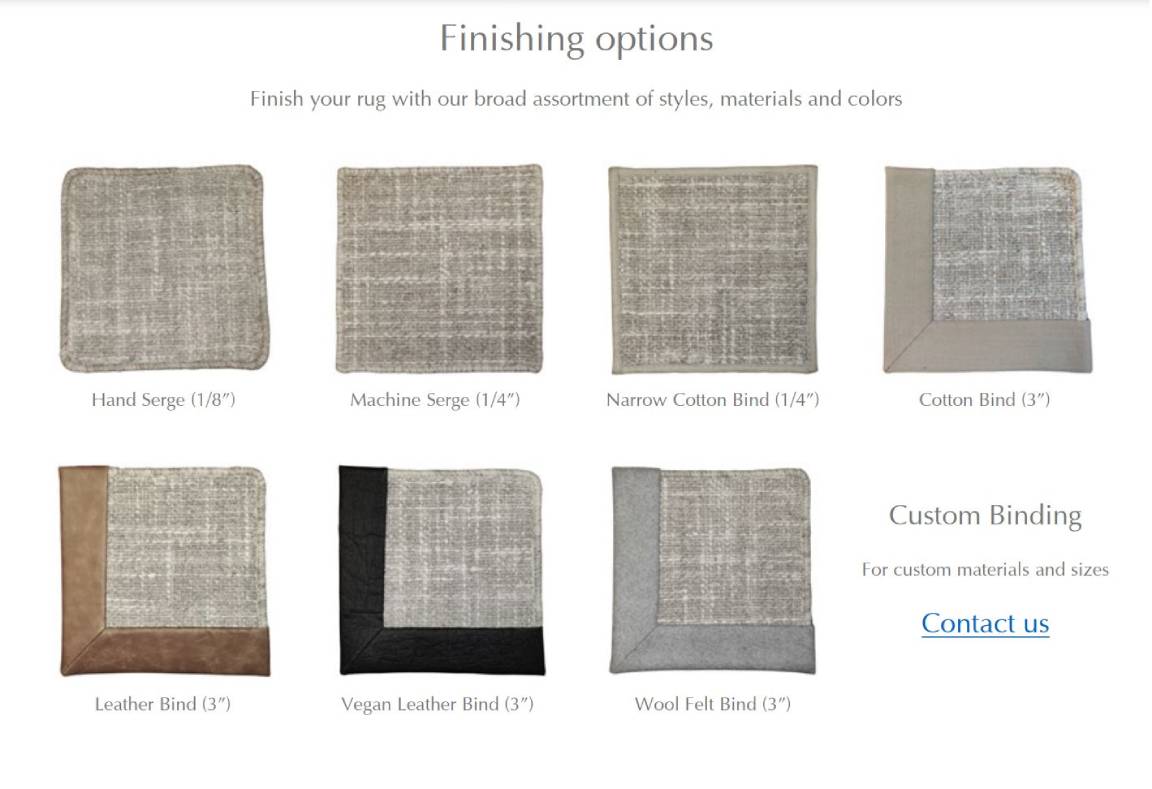Ancient Architectural Science for Harmonious Dwellings
For centuries, Vastu Shastra has been revered as an ancient Indian architectural science that aims to bring harmony and balance into living spaces. Derived from the Sanskrit words 'Vastu' (meaning dwelling) and 'Shastra' (meaning science), Vastu Shastra offers guidelines for arranging elements within a space to promote positive energies and overall well-being. The five elements - Earth, Water, Fire, Air, and Space - form the core foundation of this practice. When applied to interior design, Vastu Shastra can significantly impact the energy flow within a space. In this blog, we'll explore how to leverage the five elements of Vastu Shastra when deciding on rug colors and patterns to create harmonious and inviting interiors.
1. Earth Element - Warmth and Stability
 |
The Earth element in Vastu Shastra represents stability, support, and nourishment. When selecting a rug, opt for earthy tones like sandy beige, warm terracotta, or rich browns. These colors evoke a sense of groundedness and lend a feeling of stability to the room. Geometric patterns resembling squares, rectangles, or even a layered design symbolize the Earth element's structured and dependable nature. An Earth-colored rug with such patterns would be ideal for rooms where the occupants seek comfort and reassurance, such as the living room or bedroom. |
2. Water Element - Serenity and Flow
| The Water element embodies tranquility, flow, and purification. Colors like calming blues, soothing aquas, or refreshing greens resonate with this element and promote a serene atmosphere. Opt for rugs with wavy patterns or designs that mimic flowing water to enhance the sense of movement and peacefulness. Placing a Water element-inspired rug in rooms like the study or meditation area can encourage clear thinking and foster a tranquil environment. |  |
3. Fire Element - Energy and Passion
 |
The Fire element represents passion, energy, and transformation. Bold, vibrant colors like reds, oranges, and fiery yellows align with this element's essence. When selecting a rug, consider patterns that resemble triangles, or pyramids to evoke the spirit of Fire. Introduce Fire element-inspired rugs in spaces where social interactions occur, such as the dining room or entertainment area, as they can ignite enthusiasm and lively conversations. |
4. Air Element - Freedom and Inspiration
| The Air element embodies freedom, expansion, and inspiration. Light pastel shades, soft grays, or ethereal whites reflect the Air element's lightness and purity. Choose rugs with patterns that incorporate circles, ovals, or spirals, reminiscent of the ever-flowing movement of air. An Air element-inspired rug in areas like the home office or creative space can stimulate fresh ideas and foster an environment of unrestricted thinking. |  |
5. Space Element - Balance and Unity
 |
The Space element signifies boundless potential, unity, and balance. This element transcends colors, as it represents the vastness that encompasses all elements. A neutral-colored rug, such as cream, can embody the essence of Space. Simple, uncluttered patterns or rugs with a combination of elements from the other four categories can effectively represent the balance of Space. Incorporating a Space element-inspired rug in common areas like the foyer or hallway creates a harmonious transition between different rooms, encouraging a sense of completeness and oneness throughout the home. |
More Tips for Interior Designers and their Clients
- Room Purpose: Before selecting a rug, consider the room's purpose and the energy you wish to cultivate. Choose colors and patterns that align with the intended function of the space.
- Room Orientation: Pay attention to the room's orientation, as per Vastu Shastra principles. Ensure that the rug's colors and patterns enhance the desired flow of energy. For examples, earth tones to energizing south rooms; blues, greens work well in hot-tempered northwest; spiritual northeast spaces suit whites and yellows enhancing intuition.
- Material Matters: Besides color and pattern, the rug's material also contributes to the overall energy of the space. Natural fibers like wool, jute, and cotton align well with Vastu principles. Vastu connects the dwelling space to nature. Biodegradable materials have a lower environmental impact aligning with sustainability values important in Vastu.
- Size and Placement: Ensure the rug's size and placement align with the room's dimensions and furniture arrangement, facilitating a smooth energy flow. Place rugs in the center of a room to define zones and direct energy inward rather than dispersing outward. Allow space between furniture for proper circulation and movement of qi energy.
- Personal Preferences: Finally, it's also essential to consider personal preferences and tastes to create a space that feels truly inviting and comfortable.
In conclusion, harnessing the five elements of Vastu Shastra when choosing rug colors and patterns can profoundly impact the energy flow within a living space. By aligning the colors and patterns with the specific element's qualities, one can create harmonious interiors that resonate with positivity and well-being. Whether you're an interior designer or a client seeking to transform your living space, embracing Vastu Shastra principles while selecting rugs will undoubtedly lead to spaces that radiate balance, beauty, and positive energy.


